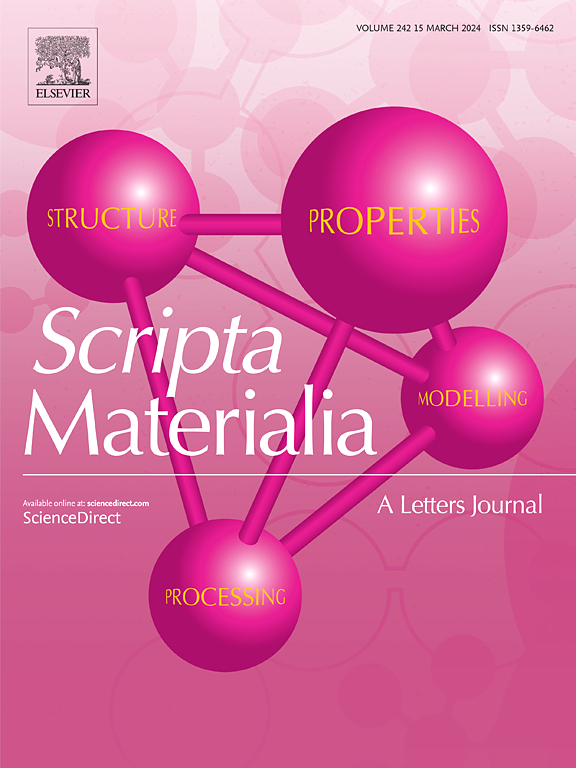纳米TiC增强铝合金增材制造中孔隙率抑制的新见解
IF 5.6
2区 材料科学
Q2 MATERIALS SCIENCE, MULTIDISCIPLINARY
引用次数: 0
摘要
氢致孔隙率是铝合金增材制造中的一个关键问题,影响了结构的可靠性和性能。抑制孔隙率的材料改性策略仍有待进一步研究。本研究展示了一种纳米颗粒材料设计策略,用于抑制固有孔隙率。TiC纳米颗粒的掺入使孔隙率降低了96.8%,晶粒尺寸从108 μm细化到12 μm,形成了完全等轴和各向同性的微观结构。多尺度分析和第一性原理计算表明,TiC表面的选择性氢吸附是主要的抑制机制。两种协同效应进一步促进了:(1)界面色散促进了高角度边界的形成,增加了氢阱密度;(2)热调制扩展了糊化区,促进了氢的再分布和气泡的逸出。这些效应使孔隙度的原位缓解和空间均匀化成为可能。这种材料驱动的方法为增材制造中原位孔隙率降低和缺陷容忍合金的设计提供了一条有前途的途径。本文章由计算机程序翻译,如有差异,请以英文原文为准。

A new insight into porosity suppression in additive manufacturing of TiC nanoparticle-enabled aluminum alloys
Hydrogen-induced porosity remains a critical issue in additive manufacturing of aluminum alloys, undermining structural reliability and performance. Material modification strategies for porosity suppression remain underexplored and require further investigation. This study demonstrates a nanoparticle-enabled material design strategy for intrinsic porosity suppression. Incorporation of TiC nanoparticles reduced porosity by 96.8 % and refined grain size from 108 μm to 12 μm, producing a fully equiaxed and isotropic microstructure. Multiscale analysis and first-principles calculations revealed that site-selective hydrogen adsorption on TiC surfaces serves as the primary suppression mechanism. Two synergistic effects further contribute: (i) interfacial dispersion promotes high-angle boundary formation, increasing hydrogen trap density; and (ii) thermal modulation extends the mushy zone, enhancing hydrogen redistribution and bubble escape. These effects enable in-situ mitigation and spatial homogenization of porosity. This material-driven approach offers a promising path for in-situ porosity mitigation and design of defect-tolerant alloys in additive manufacturing.
求助全文
通过发布文献求助,成功后即可免费获取论文全文。
去求助
来源期刊

Scripta Materialia
工程技术-材料科学:综合
CiteScore
11.40
自引率
5.00%
发文量
581
审稿时长
34 days
期刊介绍:
Scripta Materialia is a LETTERS journal of Acta Materialia, providing a forum for the rapid publication of short communications on the relationship between the structure and the properties of inorganic materials. The emphasis is on originality rather than incremental research. Short reports on the development of materials with novel or substantially improved properties are also welcomed. Emphasis is on either the functional or mechanical behavior of metals, ceramics and semiconductors at all length scales.
 求助内容:
求助内容: 应助结果提醒方式:
应助结果提醒方式:


